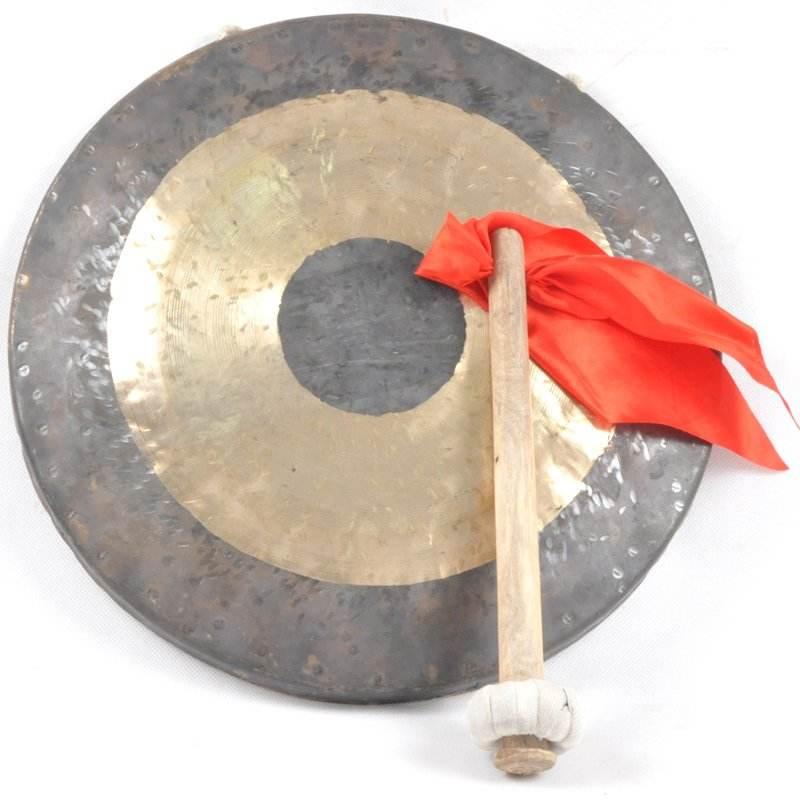daluo overview
 The big gong (pinyin: dà luó) is a kind of gong, and it is called the big gong because of its large face. It is made of copper, about 30 centimeters in diameter, flat and round, with sides, with smaller side holes and tied with ropes. When playing, the left hand is holding the gong and the right hand is holding the mallet to strike. There are many kinds of big gongs, and the popular shapes vary from place to place. Among them, Jing gong and Su gong are the two most commonly used. The big gong has no fixed pitch and is notated with one line. The sound of the gong is loud and rough, which can be used to render the atmosphere and enhance the rhythm, and is mostly used for instrumental ensemble or opera accompaniment. The large gong has a long reverberation, and it is not suitable to play dense sound patterns.
The big gong (pinyin: dà luó) is a kind of gong, and it is called the big gong because of its large face. It is made of copper, about 30 centimeters in diameter, flat and round, with sides, with smaller side holes and tied with ropes. When playing, the left hand is holding the gong and the right hand is holding the mallet to strike. There are many kinds of big gongs, and the popular shapes vary from place to place. Among them, Jing gong and Su gong are the two most commonly used. The big gong has no fixed pitch and is notated with one line. The sound of the gong is loud and rough, which can be used to render the atmosphere and enhance the rhythm, and is mostly used for instrumental ensemble or opera accompaniment. The large gong has a long reverberation, and it is not suitable to play dense sound patterns.It also often cooperates with other percussion instruments, but it plays the main role. The pronunciation of each part of the gong face is different, the central pronunciation is lower, and the side part is higher. Players often take advantage of this feature to strike different timbres and pitches on the side of the gong, at the heart of the gong, or between the two. Its rough, loud tone gives people a shocking feeling.
The gong system in Europe was passed down from the East, and in 1791 the French composer Gosec began to use it in orchestral music.
- Pinyin:dà luó
- Materials:copper
- size:About 30 cm in diameter
- type:percussion
overview of other similar instruments
- sanyanxiao overview
- Daguangxian overview
- Leiqin overview
- hahao overview
- yandundagu overview
- Han Xiaozheng overview
- Fang Xiang overview
- guanzi overview
- zhuqin (Dao Qin) overview
- zhuiqin overview
- bangzi overview
- three-stringed piano overview
- Gehu overview
- xiao overview
- xiaokonghou overview
- Konghou overview
- Sheng overview
- suona overview
- hulusi overview
- gushao overview
 渝公网安备 50010702504639号
渝公网安备 50010702504639号